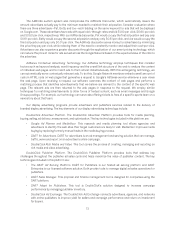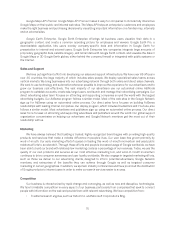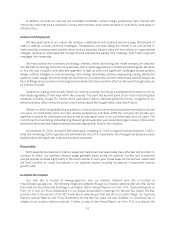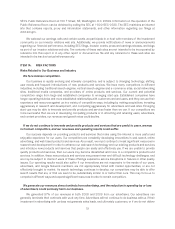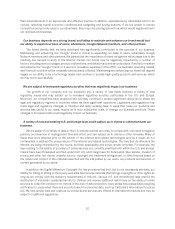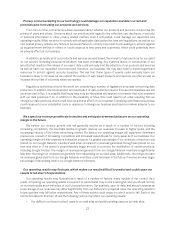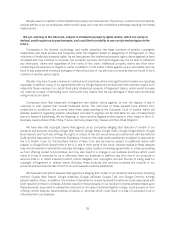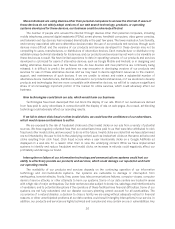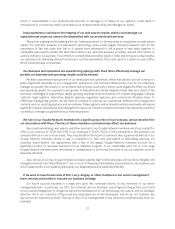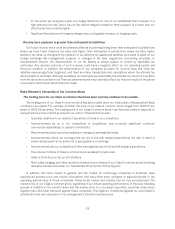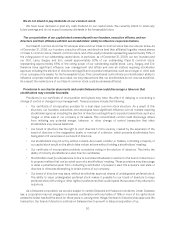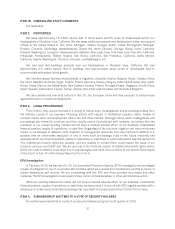Google 2009 Annual Report Download - page 39
Download and view the complete annual report
Please find page 39 of the 2009 Google annual report below. You can navigate through the pages in the report by either clicking on the pages listed below, or by using the keyword search tool below to find specific information within the annual report.Acquisitions and investments could result in operating difficulties, dilution, and other harmful
consequences.
We have acquired a number of businesses in the past, including our acquisitions of DoubleClick and Postini.
We expect to continue to evaluate and enter into discussions regarding a wide array of potential strategic
transactions. In particular, we expect to increase the number of acquisitions we make in 2010 compared to 2009.
These transactions could be material to our financial condition and results of operations. The process of
integrating an acquired company, business, or technology has created, and will continue to create, unforeseen
operating difficulties and expenditures. The areas where we face risks include:
• Implementation or remediation of controls, procedures, and policies at the acquired company.
• Diversion of management time and focus from operating our business to acquisition integration
challenges.
• Coordination of product, engineering, and sales and marketing functions.
• Transition of operations, users, and customers onto our existing platforms.
• Cultural challenges associated with integrating employees from the acquired company into our
organization.
• Retention of employees from the businesses we acquire.
• Integration of the acquired company’s accounting, management information, human resource, and other
administrative systems.
• Liability for activities of the acquired company before the acquisition, including patent and trademark
infringement claims, violations of laws, commercial disputes, tax liabilities, and other known and unknown
liabilities.
• Litigation or other claims in connection with the acquired company, including claims from terminated
employees, customers, former stockholders, or other third parties.
• In the case of foreign acquisitions, the need to integrate operations across different cultures and
languages and to address the particular economic, currency, political, and regulatory risks associated with
specific countries.
• Failure to successfully further develop the acquired technology.
Our failure to address these risks or other problems encountered in connection with our past or future
acquisitions and investments could cause us to fail to realize the anticipated benefits of such acquisitions or
investments, incur unanticipated liabilities, and harm our business generally.
Future acquisitions could also result in dilutive issuances of our equity securities, the incurrence of debt,
contingent liabilities, or amortization expenses, or write-offs of goodwill, any of which could harm our financial
condition. Also, the anticipated benefit of many of our acquisitions may not materialize. For example, we have yet
to realize significant revenue benefits from our acquisition of YouTube.
Our international operations are subject to increased risks which could harm our business, operating
results, and financial condition.
International revenues accounted for approximately 51% of our total revenues in 2008 and approximately
53% of our total revenues in 2009. More than half of our user traffic came from outside the U.S. in 2009. We have
limited experience with operations outside the U.S. and our ability to manage our business and conduct our
operations internationally requires considerable management attention and resources and is subject to a number
of risks, including the following:
• Challenges caused by distance, language, and cultural differences and by doing business with foreign
agencies and governments.
21




